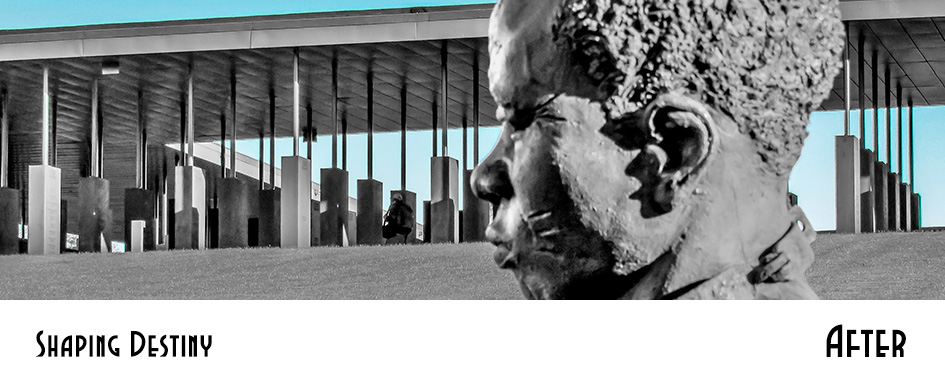A lot is at stake in the 2024 election. A Republican Party fully controlled by Donald Trump is aiming to take the White House and impose a white Christian Nationalist Agenda on the country. Their Make America Great Again (MAGA) program is out there for all to see in the Project 2025 program developed by a network of right-wing groups led by the Heritage Foundation.
Donald “I am your Retribution” Trump openly calls for unleashing a Justice Department turned-political-police on his opponents. Numerous leaders within the MAGA camp call for the use of political violence against those who stand in their way. What we are facing is an authoritarian bloc that includes an openly fascist wing.
The majority of US people do not support the MAGA agenda. The majority is also unhappy with the current state of the country and wants deep-going change. Speaking to both sentiments is the key to making the 2024 election a positive turning point in the long struggle for social justice, peace, and a sustainable planet.
To achieve that goal, an emerging bloc of progressive and radical groups have embraced a strategy termed “Block and Build.” This approach offers a guide not just to the 2024 election, but to the years of struggle beyond this November, until the MAGA authoritarians are pushed back to the margins of US politics.
Two Key Tasks in a Strategy to Win
The Block component of this strategy refers to the task of stopping the MAGA drive for power. The Build side is comprised of both electoral and non-electoral work that yields increased power for organizations that have a comprehensive agenda for deep-going progressive change. These two components are interrelated; the more gains are made in one component, the better positioned activists are to make gains in the other.
Blocking the advance of the MAGA bloc requires a sober assessment of the balance of forces in the country. The current forces arrayed against MAGA – the progressive movement, the centrist wing of the Democratic Party, the layer of pro-democracy conservatives – together make up a majority of the population and the electorate. But no single one of those political currents can mobilize that majority on its own. So blocking authoritarianism requires forging a broad anti-MAGA alliance that unites all those who can be rallied to defend democratic rights, institutions, and practices. This has been expressed as “from street fighting anarchists to anti-Trump generals” and “from Cheney to Chomsky.”
Blocking authoritarianism further requires engaging the fight with MAGA on every terrain where political contention takes place. That means partisans of social justice take up a broad spectrum of approaches including electoral work, policy campaigns, direct action, base building, efforts to shape the political narrative (that is, tell the story of what’s at stake), and self-defense.
At this moment, the electoral struggle is decisive. And for the foreseeable future the Democratic Party is the main terrain for progressive electoral action.
Unity and Struggle within the Anti-MAGA Front
The Build side of progressives’ work is needed both to maximize progressives’ contribution to the fight against MAGA, and to gain sufficient power to start a new progressive cycle in US politics. The anti-MAGA conservatives and centrist Democrats who are against MAGA do not share the progressive vision of a robust muti-racial and gender-inclusive democracy, an economy that works for the 99%, and a US foreign policy based on peace and international cooperation, rather than militarism and backing regimes that violate human rights.
So, it is essential to build the independent strength and unify the progressive current in US politics that has emerged out of the Bernie Sanders campaigns, the George Floyd uprising, the #MeToo movement, and the youth-led fights on issues of climate change and gun violence. A stronger and more coherent progressive bloc is necessary if we are to gain a measure of governing power at the local, state, and federal levels and take on the more advanced tasks required to effectively confront predatory capitalism.
Building that power requires, among other things, a sophisticated approach to navigating “unity and struggle” within the broad anti-MAGA front. That front includes multiple classes, different parties, and distinct sectors – all with different interests. Those interests often clash. This debate swirls around US complicity with Israel’s genocidal war in Gaza and the Democratic Party leadership’s turn to harsh inhumane policies on immigration. On these issues progressives’ differences with the centrist and conservative wings of the anti-MAGA coalition are extremely sharp.
Contention over those differences takes place in Democratic primaries and numerous other forms. In that contention, progressives position ourselves as the fiercest opponents of the authoritarian/fascist bloc and maintain our independence and integrity, while at the same time working to expand the reach and ranks of the pro-democracy alliance as a whole.
Accomplishing this requires resisting the temptation to narrow the front against MAGA to the ideologically pure. That is a recipe for marginalization; it weakens the anti-MAGA front and diminishes progressives’ credibility with the vulnerable constituencies who see MAGA as an existential threat.
Building the power of progressives in the context of anti-authoritarian resistance also requires consistency in making the links between the fight for political democracy and making tangible material improvements in the lives of working people and all those who are oppressed or marginalized. It means developing specific strategies to build power locality-by-locality and state-by-state as well as at the federal level given the complexities of the US federal system. And it means giving careful attention to building and defending the institutional capacity (for example, expanding the labor movement by orders of magnitude) to engage in popular and narrative struggles at scale.
Building progressive power is not a task accomplished in a few years or in one or two election cycles. The social justice current in this country has grown substantially since Bernie’s campaign and Trump’s 2016 victory, which propelled millions into action and pushed many organizations to enter and gain expertise in electoral action and crafting messages that speak to the popular majority. But we are not yet strong enough to be the main force shaping the agenda of a Democratic administration if the MAGA bid for power is beaten back in 2024.
And it will take more than one or two big defeats to drive white Christian Nationalism back to the margins of US politics, given its deep roots in a country whose founding was bound up with genocide of the Indigenous people and racial slavery.
So we can expect the Block and Build strategy to remain relevant until there is a leap in our influence and a large-scale reconfiguration of the balance of forces map of US politics. Then will come a rethink and new strategic perspective, as we follow the advice Sun Tzu provided us centuries ago:
“If you know the enemy and yourself, you need not fear the result of a hundred battles. If you know yourself but not the enemy, for every victory gained you will also suffer a defeat. If you know neither the enemy nor yourself, you will succumb in every battle.”
For much more detail on the Block and Build strategy, see:
- Introducing Block and Build: A One-Hour Livestream
- Block and Build: A Syllabus for Self- or Group Study
- The Block and Build Podcast: A Weekly Roadmap for the Left
- The series of “Mass Calls” sponsored by the Working Families Party in partnership with Seed the Vote, Showing Up for Racial Justice (SURJ), and the Movement for Black Lives (M4BL). Recordings of all mass calls and a summary of the Working Families Party political strategy can be found at: https://workingfamilies.org/masscalls


